
COLD, FLU & COUGH NEWS AND RESEARCH
Latest Cold, Flu & Cough News and Research
Technology divide between senior ‘haves’ and ‘have-nots’ roils pandemic response
Family gatherings on Zoom and FaceTime. Online orders from grocery stores and pharmacies. Telehealth appointments with physicians.
Mouse model of pancreatic cancer recreates two subtypes of human disease
Scientists at Cold Spring Harbor Laboratory (CSHL) have created the first mouse model of pancreatic cancer that recreates two subtypes of the human disease.
Medicaid mystery: Millions of enrollees haven’t materialized in California
The predictions were dire: Coronavirus lockdowns would put millions of Americans out of work, stripping them of their health insurance and pushing them into Medicaid, the health insurance program for low-income people.
States search for ways to deal with COVID-19 testing backlogs
States frustrated by private laboratories' increasingly long turnarounds for COVID-19 test results are scrambling to find ways to salvage their testing programs.
Study shows interferons do not induce the expression of SARS-CoV-2 cell entry receptor
In a new bioRxiv study, authors identified a isoform of ACE2 (designated as deltaACE2 or dACE2) receptor, shown to be induced in various human cell types.
Studies could help develop clinical evaluation tool to infer the symptomatology of COVID-19
From March 2020, when COVID-19 spread throughout Europe, GPs had to rely on clinical information collected in hospitals, the only official information available, when dealing with potential infections.
Study shows how leptin regulates the presence of neurons in fat
There's no doubt that you can lose fat by eating less or moving more--yet after decades of research, the biology underlying this equation remains mysterious.
NIH leaders create a framework to scale up testing technologies for COVID-19
In a paper in the New England Journal of Medicine, scientific leaders from the National Institutes of Health set forth a framework to increase significantly the number, quality and type of daily tests for detecting SARS-CoV-2, the virus that causes COVID-19, and help reduce inequities for underserved populations that have been disproportionally affected by the disease.
Access to food stamp program lowers repeat physician visits for medical care
In a new study, University of Colorado Denver researchers found when people have access to the food stamp program, they are less likely to frequent a physician for medical care.
Novel device offers added protection for healthcare workers performing endoscopies during COVID-19
The COVID-19 pandemic has thrown up unimaginable challenges for healthcare workers. Even simple outpatient procedures such as endoscopies can expose staff to the risk of infection.
New studies indicate the presence of cerebrovascular-neurological dysfunction in COVID-19 patients
As the SARS-CoV-2 virus, or COVID-19 has unfurled its tentacles across the globe, the severe respiratory and pulmonary disorders associated with the infection have become well known.
Study: Only a few symptoms change the underlying likelihood of community-acquired pneumonia
While the history and physical examination is important, only a few key signs and symptoms significantly change the underlying likelihood of community-acquired pneumonia (CAP).
A new sign of COVID-19: a rash in the mouth
The severe acute respiratory syndrome coronavirus 2 (SARS-CoV-2) pandemic has wreaked havoc across the globe, with more than 14.89 million people infected. Coronavirus disease (COVID-19), caused by SARS-CoV-2, has a string of symptoms that include cough, fever, and difficulty of breathing. As the disease evolved, many patients reported the loss of smell and taste as other accompanying symptoms.
Research focuses on detection of COVID-19 airborne droplets using bioengineered membrane
Detection and analysis of airborne coronavirus droplets using a bioengineered membrane is the focus of exploratory research at the University of Maine and University of Massachusetts Amherst, funded by the National Science Foundation.
Lab-made virus infects cells, interacts with antibodies just like SARS-CoV-2
Airborne and potentially deadly, the virus that causes COVID-19 can only be studied safely under high-level biosafety conditions.
Mouse model of fatal COVID-19 developed for vaccine and drug testing
Now, a new study published on the preprint server bioRxiv in July 2020 presents an engineered transgenic mouse that reproduces the functional and clinical characteristics of severe human SARS-CoV-2 infection.
New system uses X-ray images of patients’ lungs to diagnose COVID-19
Researchers from the Department of Computer Architecture and Technology at the University of Seville's School of Computer Engineering (ETSII) are working on a system that uses X-ray images of patients' lungs to help diagnose COVID-19.
Coronavirus pandemic could be just the “tip of the iceberg” this winter, warns health charity
With experts stating that 120,000 people could perish from Coronavirus in the closing months of the year, a health charity is warning Britain had better brace itself for another crisis – antibiotic resistant infections.
Government must ease the lockdown safely and responsibly as pandemic is 'still rife', BMA warns
The coronavirus pandemic is still rife – too many people are still becoming infected and dying every day. If the Government wants to set the country on the path to ‘normality’, it must ensure that lockdown is eased safely and responsibly.
New mathematical model predicts the early spread of respiratory viruses including COVID-19
Respiratory droplets from a cough or sneeze travel farther and last longer in humid, cold climates than in hot, dry ones, according to a study on droplet physics by an international team of engineers.

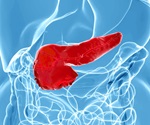

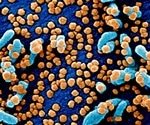
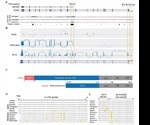
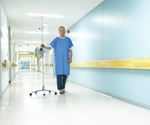
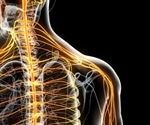



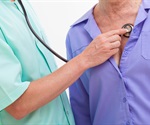

_da3b20ab8cf64e05b02d2b802b5712c6-150x125.jpg)
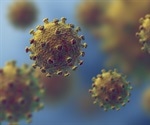
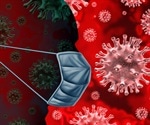

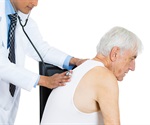

_16e7ee38d08243b28abb6700a49f2962-150x125.jpg)























.png)









No hay comentarios:
Publicar un comentario